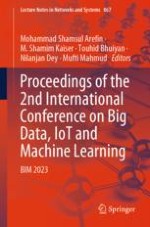2024 | OriginalPaper | Buchkapitel
Brain Ischemic Stroke Segmentation Using Ensemble Deep Learning
verfasst von : Rathin Halder, Nusrat Sharmin
Erschienen in: Proceedings of the 2nd International Conference on Big Data, IoT and Machine Learning
Verlag: Springer Nature Singapore
Aktivieren Sie unsere intelligente Suche, um passende Fachinhalte oder Patente zu finden.
Wählen Sie Textabschnitte aus um mit Künstlicher Intelligenz passenden Patente zu finden. powered by
Markieren Sie Textabschnitte, um KI-gestützt weitere passende Inhalte zu finden. powered by
